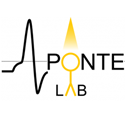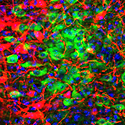Featured Paper of the Month – April 2024
Published in Frontiers in Public Health by Salvatore Giorgi and Brenda Curtis, et al. of the NIDA IRP Technology and Translational Research Unit.
In this work, we apply a computational linguistic framework to measure dehumanization to 3 million news articles. We show that popular media in the U.S. has dehumanized people who used substances to varying degrees. Substances such as heroin have been strongly dehumanized for decades, while marijuana use is becoming less dehumanized over time, aligning with increased public support for legalization.










